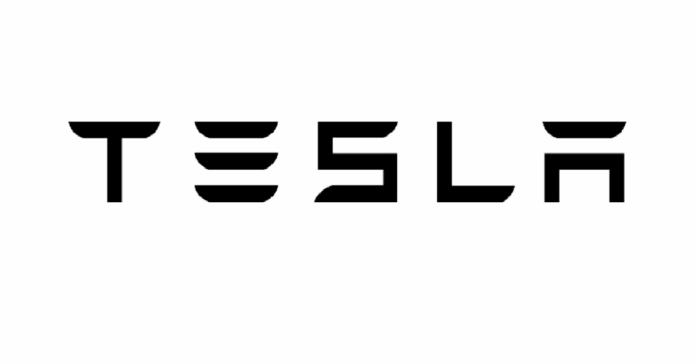Tesla, Inc. could lose $1-2 billion annually if the One Big Beautiful Bill eliminates EV and ZEV tax credits, threatening its profitability amid rising competition and regulatory shifts.
The electric vehicle (EV) giant Tesla, Inc. (TSLA) stands at a critical juncture as the proposed “One Big Beautiful Bill” (H.R. 1), passed by the U.S. House of Representatives on May 22, 2025, threatens to dismantle key financial supports that have underpinned its profitability. Analysts estimate that the elimination of the $7,500 federal tax credit for new EV purchases and potential disruptions to California’s Zero Emission Vehicle (ZEV) credit program could result in a $1-2 billion annual earnings hit, with some projections suggesting losses as high as $3.2 billion if both measures are fully implemented. This legislative shift, part of President Donald Trump’s second-term agenda, could reshape Tesla’s financial landscape, forcing the company to navigate a challenging environment of reduced consumer incentives, heightened competition, and evolving market dynamics. As Tesla’s stock trades at $317.66, far above its calculated intrinsic value, investors are grappling with the implications of these changes for the company’s future.
The Tax Credit Blow: $1-2 Billion in Losses
The One Big Beautiful Bill targets key tax credits that have been instrumental to Tesla’s financial success. Specifically, it proposes to eliminate the $7,500 federal tax credit for new EVs and the $4,000 credit for used EVs for automakers that have sold over 200,000 qualifying vehicles by December 31, 2025. Tesla, having delivered over 336,000 vehicles in Q1 2025 alone, would lose eligibility starting in 2026, resulting in an estimated $1.2 billion annual hit to Earnings Before Interest and Taxes (EBIT), or 19% of its 2024 EBIT of $8.06 billion, according to JPMorgan analysts. Additionally, separate Senate legislation aims to revoke federal waivers supporting California’s ZEV credit program, which allows Tesla to sell regulatory credits to other automakers, generating an estimated $2 billion annually, or 33% of EBIT. In Q1 2025, Tesla’s $442 million in regulatory credit revenue was critical to avoiding a net loss, highlighting its dependence on these credits. The $1-2 billion loss estimate reflects the EV tax credit elimination and partial ZEV credit impacts, with the higher end assuming a significant reduction in regulatory credit revenue.
Financial Context and Tesla’s Vulnerability
Tesla’s 2024 financial performance, as detailed in provided financial statements, underscores its reliance on these credits. The company reported a trailing twelve-month (TTM) Net Income of $6.149 billion and EBIT of $8.056 billion. The potential $1-2 billion EBIT reduction translates to a 12.4%-24.8% hit, which, at a 19.8% tax rate (TTM TaxProvision / PretaxIncome), could reduce Net Income by $0.8-1.6 billion after taxes. This is particularly concerning given Tesla’s Q1 2025 performance, where Net Income fell 71% year-over-year to $409 million, and regulatory credits were pivotal to profitability. Without the $442 million in Q1 2025 credits, Tesla would have reported a loss, a stark reminder of its exposure to regulatory changes. Since 2012, Tesla has earned $32 billion in profits, with regulatory credits accounting for 34% of that total, making their potential loss a significant threat to the company’s financial stability.
Strategic Implications and Competitive Landscape
The loss of tax credits could force Tesla to lower vehicle prices to maintain demand, further pressuring margins already strained by competitive pricing from rivals like Chevrolet (Equinox EV) and Hyundai (Ioniq 5). Posts on X highlight investor concerns about Tesla’s ability to absorb these costs, with some suggesting that the company’s focus on cost efficiency and brand loyalty could mitigate the impact. Automotive expert Lauren Fix argues that Tesla’s production efficiencies give it an edge over competitors like General Motors and Ford, who lose money on EV sales. However, Tesla’s recent challenges—declining European sales partly attributed to brand backlash tied to CEO Elon Musk’s political activities and a 14% stock drop on June 5, 2025, erasing $152 billion in market capitalization—suggest vulnerabilities that could be exacerbated by the loss of incentives.
Offsetting Factors and Short-Term Dynamics
The One Big Beautiful Bill offers a potential lifeline through a new $10,000 annual auto loan interest deduction for U.S.-assembled vehicles, including Tesla’s entire lineup. For a $50,000 Tesla Model 3 loan, this could yield hundreds of dollars in annual tax savings, partially offsetting the $7,500 credit loss and supporting demand among buyers financing purchases. Additionally, the impending expiration of EV credits on December 31, 2025, may drive a short-term sales surge as consumers rush to claim the benefit, potentially boosting Tesla’s 2025 revenue. However, analysts warn that post-2026 demand could soften without incentives, particularly in price-sensitive markets. Musk’s earlier comments that ending EV subsidies could benefit Tesla by weakening competitors have been overshadowed by his recent criticism of the bill as a “disgusting abomination,” reflecting its potential to increase the federal deficit and unfairly target EV incentives while preserving oil and gas subsidies. Tesla’s $240,000 lobbying spend in 2025 to preserve EV policies underscores the company’s shift toward defending these credits.
Impact on Tesla’s Energy Business
Tesla’s energy division, encompassing Megapack and Powerwall battery systems, is also at risk. The division generated $2.73 billion in Q1 2025, up 67% year-over-year, but the bill’s elimination of the Investment Tax Credit (ITC) for solar and energy storage, effective January 1, 2026, could reduce demand and profitability. Tesla Energy has called for a phased wind-down of these credits to support continued deployment of clean energy infrastructure, warning that an abrupt end threatens U.S. energy independence and grid reliability. While specific financial impacts are not quantified, the loss of ITC could slow Tesla’s momentum in the energy sector, a key growth driver as the company pivots toward AI and robotics.
Valuation Analysis: Is Tesla Overvalued?
A valuation analysis using the Buffett and McGrew Valuation Methods provides insight into Tesla’s intrinsic value amid these regulatory risks. The Buffett Valuation, assuming a conservative 3% Free Cash Flow (FCF) growth rate, estimates an intrinsic value of $93.11 per share, while the McGrew Valuation, accounting for Tesla’s high growth (41.9% FCF CAGR capped at 15%), estimates $148.78 per share. With a last closing price of $317.66, both methods indicate Tesla is significantly overvalued, with the stock trading 241% above the Buffett intrinsic value and 114% above the McGrew intrinsic value. The following table summarizes the valuation:
| Stock Ticker | Valuation Method | Intrinsic Value per Share | Price with 25% Margin of Safety | Last Closing Price | Valuation Status |
|---|---|---|---|---|---|
| TSLA | Buffett Valuation | $93.11 | $69.83 | $317.66 | Overvalued |
| TSLA | McGrew Valuation | $148.78 | $111.59 | $317.66 | Overvalued |
Valuation Calculation Note: Valuations were calculated using the Buffett and McGrew Valuation Methods for non-Financial Services companies, per the provided model. Free Cash Flow (FCF) was computed as Net Income ($6.149 billion TTM) minus Derivative Gains/Losses (assumed zero due to lack of data) plus Capital Expenditure ($10.057 billion TTM), yielding $16.225 billion. The Buffett Valuation used a 3% growth rate for 10 years, a 2.5% perpetual growth rate, and an 8% discount rate. The McGrew Valuation used a 15% initial growth rate (capped from 41.9% FCF CAGR), declining to 6% by Year 7, with the same perpetual growth and discount rates. Enterprise Value was adjusted for net debt (Total Debt $13.128 billion minus Cash $16.352 billion and Restricted Cash $486 million, floored at zero). Equity Value was divided by 3.22 billion shares outstanding. Limitations include the absence of Derivative Gains/Losses data and the assumption that Restricted Cash offsets debt, which may not fully apply to Tesla.
Future Outlook and Strategic Considerations
The Senate’s review of the One Big Beautiful Bill, expected to conclude soon, will be pivotal. Potential amendments could soften the impact on EV and energy tax credits, but the current proposal suggests a challenging road ahead. Tesla’s long-term strategy hinges on its ability to leverage AI, robotics, and its robotaxi project to offset the loss of regulatory revenue. The company’s focus on autonomous driving, with plans for a $25,000-$30,000 vehicle launch, could drive growth, but execution risks remain high. Tesla’s zero federal income tax in 2024, despite $2.3 billion in U.S. income, highlights its reliance on tax strategies like accelerated depreciation, which could face further scrutiny under new tax policies.Investors should closely monitor Tesla’s pricing adjustments, regulatory credit disclosures, and progress in AI and energy storage. While the auto loan interest deduction and Tesla’s operational efficiencies offer some relief, the $1-2 billion earnings hit could strain margins, particularly if competition intensifies. The company’s ability to adapt to a post-subsidy era, coupled with the Senate’s final decision, will determine whether Tesla can maintain its market leadership or face a period of financial turbulence. For now, the stock’s overvaluation signals caution, as the market may not have fully priced in the regulatory risks looming on the horizon.
#Tesla #EVTaxCredits #OneBigBeautifulBill #ElonMusk #CleanEnergy #StockValuation #RegulatoryCredits #EVMarket #TeslaEnergy

